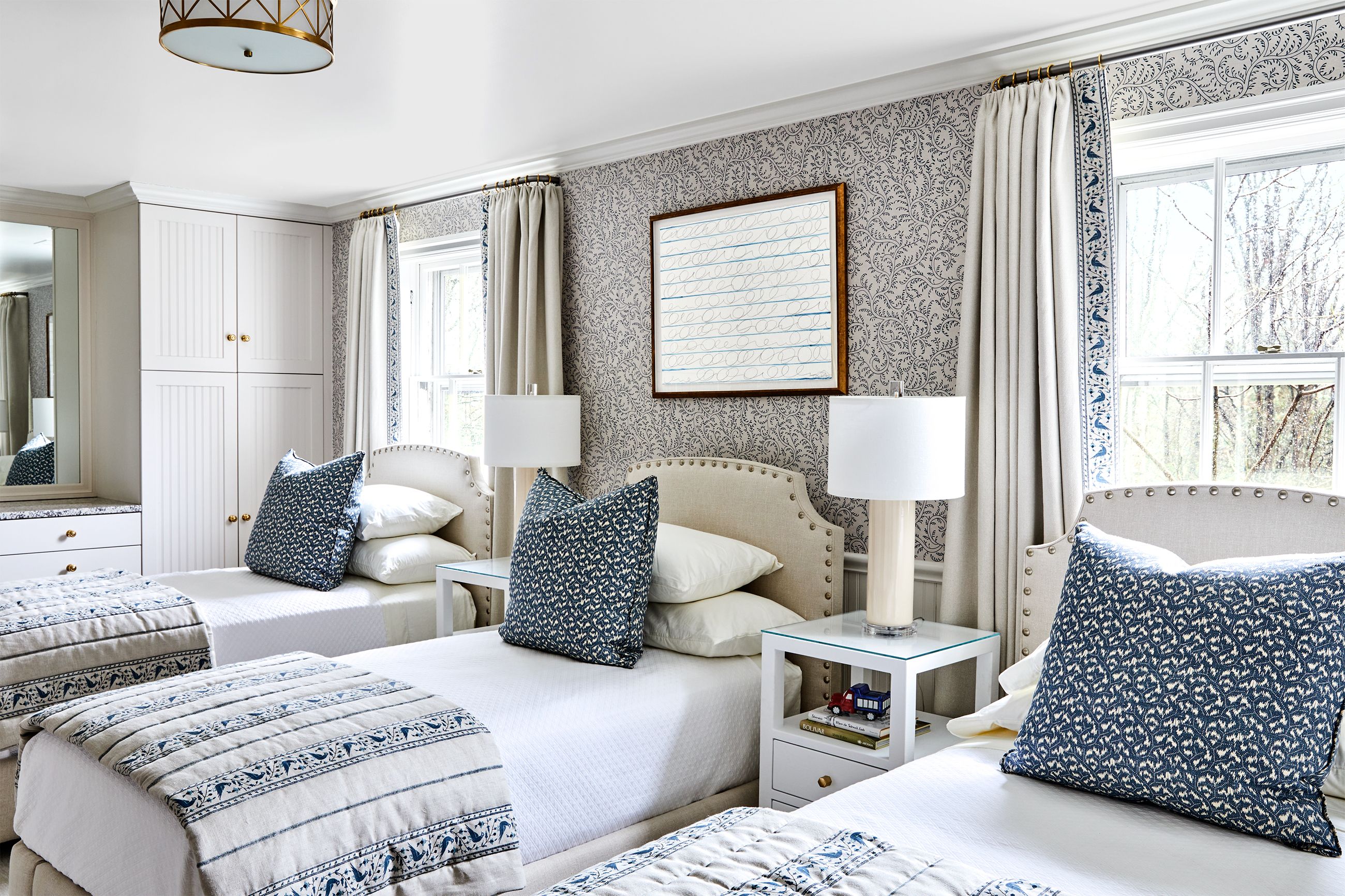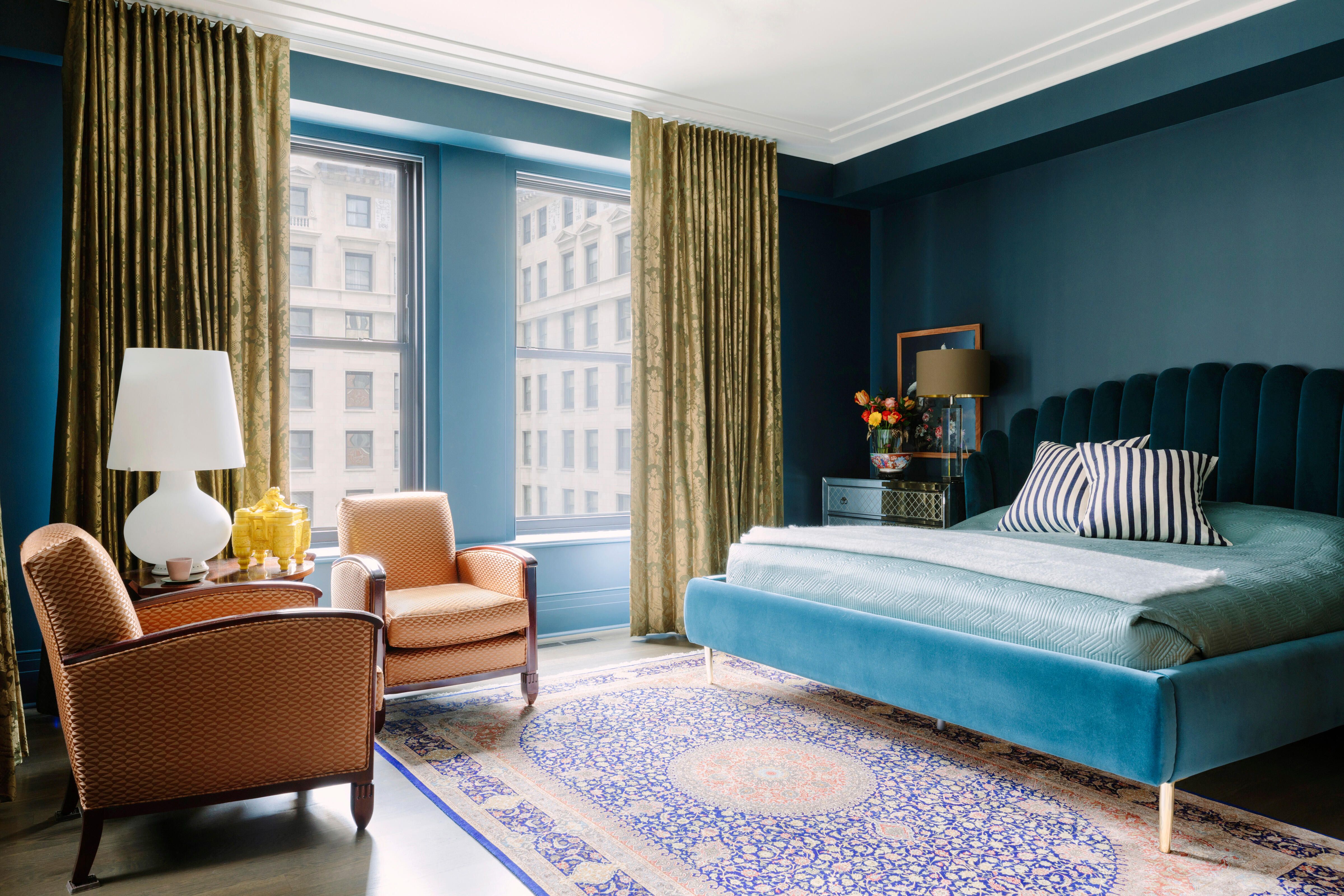Curtain and Rug Set Styles for Different Bedroom Aesthetics

Choosing the right curtain and rug set can significantly impact the overall look and feel of your bedroom. By harmonizing these elements, you can create a cohesive and inviting space that reflects your personal style. This guide explores the most popular curtain and rug set styles for various bedroom aesthetics, providing inspiration and practical tips for making informed choices.
Modern Bedroom Aesthetics
Modern bedrooms prioritize clean lines, minimalist design, and a sense of spaciousness. The curtain and rug set should complement this aesthetic, adding a touch of sophistication without overwhelming the space.
- Color Palettes: Neutral tones like white, gray, black, and beige are popular choices for modern bedrooms. Consider incorporating subtle pops of color with accents like throw pillows or artwork.
- Patterns: Geometric patterns, such as stripes or chevrons, are commonly used in modern decor. Keep the patterns simple and avoid overly busy designs.
- Textures: Smooth, sleek fabrics like linen, silk, or velvet add a touch of luxury to modern bedrooms. Look for rugs with low piles or a minimalist design.
For example, a set of white linen curtains with blackout lining paired with a gray geometric rug would create a clean and sophisticated look. The curtains would provide privacy and light control, while the rug would add warmth and texture to the floor.
Minimalist Bedroom Aesthetics
Minimalist bedrooms are all about simplicity and functionality. The goal is to create a calm and uncluttered space. The curtain and rug set should enhance this sense of tranquility, focusing on neutral colors and simple designs.
- Color Palettes: White, gray, and beige are the go-to colors for minimalist bedrooms. These neutral shades create a sense of peace and serenity.
- Patterns: Solid colors or subtle textures are preferred in minimalist bedrooms. Avoid bold patterns or busy designs.
- Textures: Natural fibers like cotton, wool, or jute are popular choices for minimalist bedrooms. These materials provide a sense of warmth and comfort without being overly fussy.
For example, a set of white cotton curtains with a simple design paired with a beige wool rug would create a minimalist and calming atmosphere. The curtains would provide privacy and light control, while the rug would add a touch of warmth and texture to the floor.
Bohemian Bedroom Aesthetics
Bohemian bedrooms are known for their eclectic mix of colors, patterns, and textures. The curtain and rug set should embrace this free-spirited style, adding a touch of whimsy and personality to the space.
- Color Palettes: Rich jewel tones like emerald green, sapphire blue, and ruby red are popular choices for bohemian bedrooms. These colors create a sense of depth and vibrancy.
- Patterns: Bold patterns like florals, paisley, and geometric designs are common in bohemian decor. Don’t be afraid to mix and match different patterns to create a unique and eclectic look.
- Textures: Natural fibers like cotton, linen, and wool are popular choices for bohemian bedrooms. Look for rugs with fringe, tassels, or other decorative elements.
For example, a set of emerald green velvet curtains with a floral pattern paired with a multi-colored rug with fringe would create a bohemian and eclectic look. The curtains would add a touch of luxury and drama, while the rug would bring in a sense of warmth and personality.
Traditional Bedroom Aesthetics
Traditional bedrooms are characterized by their classic and timeless designs. The curtain and rug set should complement this aesthetic, adding a touch of elegance and sophistication to the space.
- Color Palettes: Neutral colors like ivory, cream, and beige are popular choices for traditional bedrooms. These colors create a sense of warmth and sophistication.
- Patterns: Damask, floral, and geometric patterns are commonly used in traditional decor. Keep the patterns classic and timeless, avoiding overly modern or trendy designs.
- Textures: Rich fabrics like velvet, silk, and brocade are popular choices for traditional bedrooms. Look for rugs with intricate designs and plush textures.
For example, a set of ivory silk curtains with a damask pattern paired with a cream-colored rug with a floral design would create a traditional and elegant look. The curtains would add a touch of luxury and sophistication, while the rug would provide warmth and texture to the floor.
The Importance of Matching Curtains and Rugs in a Bedroom

Matching curtains and rugs in a bedroom can be a game-changer for creating a cohesive and visually appealing space. By carefully selecting these elements, you can enhance the bedroom’s ambiance and functionality, making it a haven of comfort and style.
The Impact of Color Harmony
Color harmony is the foundation of a visually pleasing design. When curtains and rugs share similar colors, they create a sense of unity and balance. This harmony can be achieved through:
- Analogous Colors: These are colors that sit next to each other on the color wheel, like blue, blue-green, and green. This creates a calming and serene atmosphere.
- Complementary Colors: These are colors that sit opposite each other on the color wheel, like red and green. This creates a vibrant and dynamic contrast, adding a pop of energy to the space.
- Monochromatic Colors: These are different shades of the same color, creating a sophisticated and elegant look. For instance, using various shades of gray for both curtains and rug can make the room feel luxurious and timeless.
Curtain and Rug Set Materials and Considerations: Curtain And Rug Set Bedroom

Choosing the right materials for your curtains and rug is crucial for achieving the desired aesthetic and functionality in your bedroom. The materials used will significantly impact the overall look, feel, and longevity of your bedroom decor. This section will explore the most common materials used for curtains and rugs, their advantages and disadvantages, and provide tips on choosing the right materials for your specific needs and preferences.
Curtain Materials
Curtain materials play a significant role in influencing the overall ambience and functionality of your bedroom. Different materials offer varying levels of light filtering, durability, and maintenance requirements.
The most common curtain materials include:
- Cotton: Cotton is a natural, breathable, and soft fabric that is commonly used for curtains. It is relatively affordable, easy to care for, and available in a wide range of colors and patterns. Cotton curtains are generally light-filtering, allowing some natural light to pass through. They are also a good choice for bedrooms with high humidity levels as they can absorb moisture and help regulate temperature.
- Linen: Linen is another natural fiber known for its durability, breathability, and luxurious feel. It is a heavier fabric than cotton, offering better light blocking capabilities. Linen curtains are also wrinkle-resistant and can add a touch of sophistication to your bedroom. However, linen can be more expensive than cotton and requires special care, such as dry cleaning.
- Silk: Silk is a luxurious and elegant fabric that adds a touch of opulence to any bedroom. Silk curtains are known for their soft drape, beautiful sheen, and excellent light blocking capabilities. However, silk is delicate and requires careful maintenance, including dry cleaning.
- Polyester: Polyester is a synthetic fiber that is known for its durability, wrinkle resistance, and easy care. Polyester curtains are often used in modern and contemporary bedrooms as they are available in a wide range of colors and patterns. Polyester is also a good choice for bedrooms with high traffic as it can withstand frequent washing and wear and tear.
- Velvet: Velvet is a luxurious fabric that adds a touch of richness and elegance to any bedroom. Velvet curtains are known for their soft texture, deep color, and excellent light blocking capabilities. However, velvet can be more expensive than other materials and requires special care, such as dry cleaning.
Rug Materials, Curtain and rug set bedroom
Rug materials play a crucial role in defining the comfort, style, and functionality of your bedroom. Different materials offer varying levels of durability, softness, and maintenance requirements.
The most common rug materials include:
- Wool: Wool is a natural fiber known for its durability, softness, and insulation properties. Wool rugs are often used in traditional and classic bedrooms as they add warmth and elegance to the space. Wool is also naturally stain-resistant and can withstand heavy foot traffic.
- Cotton: Cotton is a natural fiber that is known for its softness, breathability, and affordability. Cotton rugs are often used in modern and contemporary bedrooms as they offer a clean and minimalist aesthetic. However, cotton rugs are not as durable as wool rugs and may require more frequent cleaning.
- Silk: Silk is a luxurious fiber that adds a touch of opulence to any bedroom. Silk rugs are known for their soft texture, beautiful sheen, and excellent durability. However, silk rugs are expensive and require special care, such as dry cleaning.
- Jute: Jute is a natural fiber that is known for its durability, sustainability, and affordability. Jute rugs are often used in bohemian and rustic bedrooms as they add a natural and earthy feel to the space. Jute is also a good choice for bedrooms with high traffic as it can withstand heavy foot traffic.
- Synthetic Fibers: Synthetic fibers such as nylon, polypropylene, and acrylic are often used in rugs as they are durable, affordable, and easy to care for. Synthetic rugs are available in a wide range of colors and patterns and are a good choice for bedrooms with high traffic or allergies.
